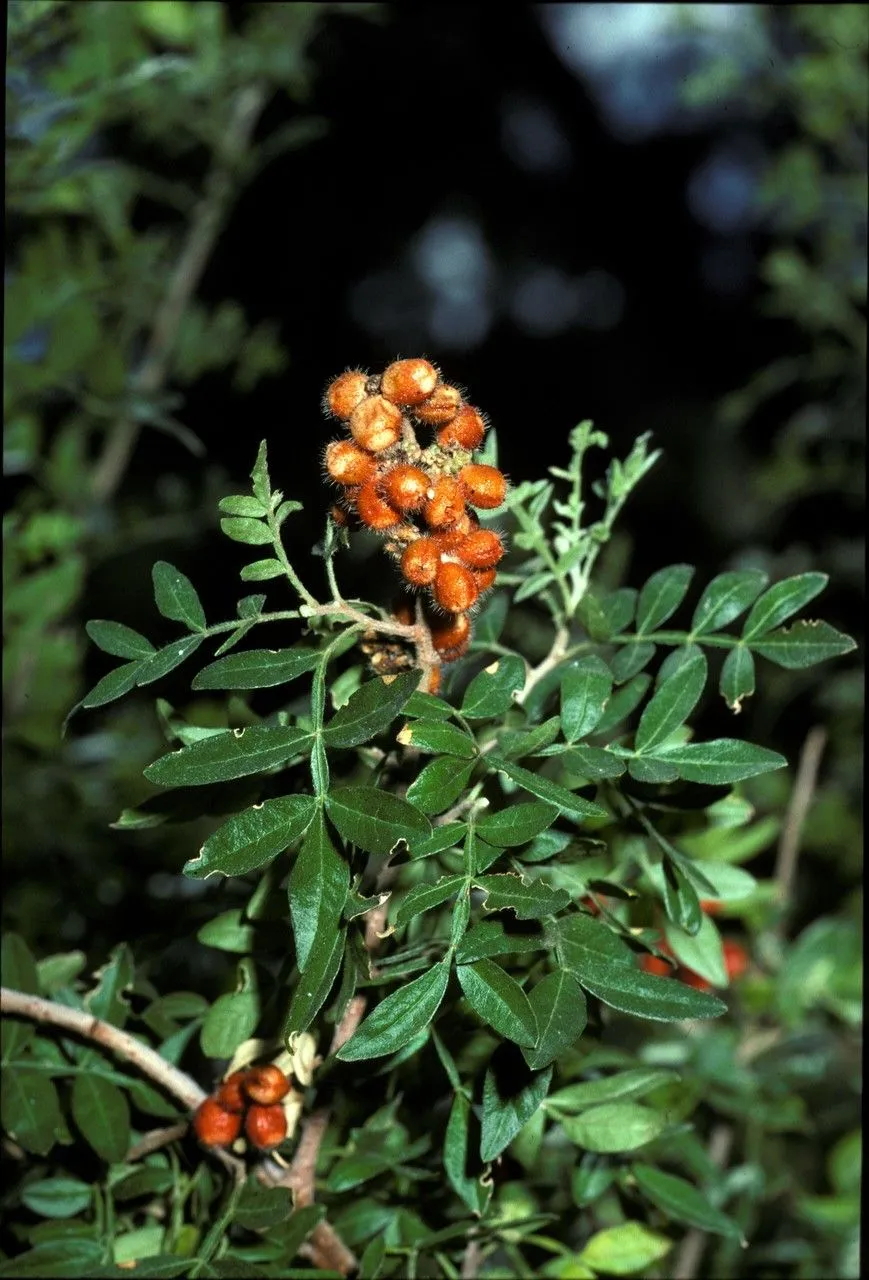
Author: Engelm.
Bibliography: Smithsonian Contr. Knowl. 3(5): 31 (1852)
Year: 1852
Status: accepted
Rank: species
Genus: Rhus
Vegetable: False
Observations: Arizona to SW. Oklahoma and Mexico
Desert sumac, scientifically known as Rhus microphylla, is a fascinating shrub native to the arid regions extending from Arizona to southwestern Oklahoma and into Mexico. This resilient plant belongs to the Anacardiaceae family, a grouping that includes other well-known species like poison ivy and mango.
Officially described in 1852 by the botanist Georg Engelmann, whose work was published in the Smithsonian Contributions to Knowledge, Desert sumac is recognized for its adaptability to dry, challenging environments. Its intricate network of small leaves, which give it the specific epithet ‘microphylla’ meaning ‘small-leaved,’ plays a crucial role in conserving water, an essential trait for survival in its native ecological zones.
Typically found in areas characterized by sparse rainfall and intense sunlight, Deser sumac thrives in its natural habitat, showcasing an incredible capacity to withstand drought conditions. This shrub not only contributes to the biodiversity of desert environments but also serves as an important resource for local wildlife. The berries produced by the plant provide nutrient-rich food for birds and small mammals, while its robust root system helps prevent soil erosion, enhancing the stability of the land it inhabits.
In addition to its ecological benefits, Desert sumac has also been utilized in traditional practices by indigenous cultures. The plant’s various parts, from leaves to berries, have historically been used for medicinal purposes and as a source of natural dyes.
Understanding and appreciating the role of Desert sumac in its native ecosystem underscores the broader importance of preserving desert flora. This resilient shrub, with its ability to flourish in some of the harshest climates, exemplifies the remarkable adaptability and tenacity of desert plant species.
Spa: correosa
Eng: desert sumac, scrub sumac, small-leaf sumac
En: Desert sumac, Scrub sumac, Small-leaf sumac, Littleleaf sumac, Littleleaf desert sumac
Es: Correosa
Taken Jul 23, 1991 by Daniel Barthelemy (cc-by-nc)
© copyright of the Board of Trustees of the Royal Botanic Gardens, Kew.
Growth form>: Multiple Stem
Growth habit>: Tree, Shrub
Growth rate>: Moderate
Ph maximum: 8.5
Ph minimum: 7.0
Family: Myrtaceae Author: (F.Muell.) K.D.Hill & L.A.S.Johnson Bibliography: Telopea 6: 402 (1995) Year: 1995 Status:…
Family: Rubiaceae Author: Pierre ex A.Froehner Bibliography: Notizbl. Bot. Gart. Berlin-Dahlem 1: 237 (1897) Year:…
Family: Sapindaceae Author: Koidz. Bibliography: J. Coll. Sci. Imp. Univ. Tokyo 32(1): 38 (1911) Year:…
Family: Asteraceae Author: A.Gray Bibliography: Pacif. Railr. Rep.: 107 (1857) Year: 1857 Status: accepted Rank:…
Family: Fabaceae Author: Medik. Bibliography: Vorles. Churpfälz. Phys.-Ökon. Ges. 2: 398 (1787) Year: 1787 Status:…
Family: Aspleniaceae Author: (Cav.) Alston Bibliography: Bull. Misc. Inform. Kew 1932: 309 (1932) Year: 1932…